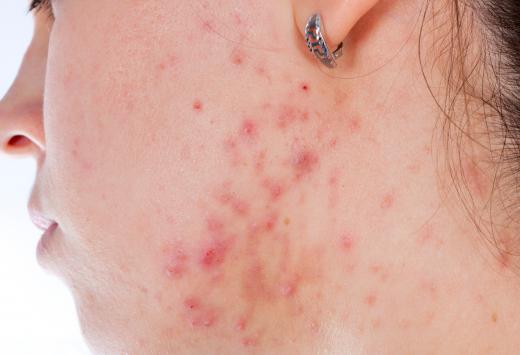A face buffer is a personal-care tool that can be used to either exfoliate the skin or remove facial hair. In some cases, an exfoliating face buffer is simply a sponge or cloth with an abrasive surface, while in other cases it may be a mechanical device equipped with either a rotating brush or a vibrating, abrasive pad to encourage deeper exfoliation. A hair-removal face buffer buffs away facial hair but does not remove it from the follicle. Both types of buffers are available for use on the face as well as the rest of the body.
Many people find that the appearance of their skin improves with regular exfoliation. This is because dead skin cells can dull the surface of the skin. In addition, dead skin cells can also clog pores, which can contribute to acne. Use of an exfoliating face buffer is one way to remove these cells, although consumers also have the option of using a chemical exfoliant, such as a lotion or cream that contains alpha or beta hydroxy acids. In their simplest form, facial buffers are simply sponges, pads, or washcloths that can abrasively clean the skin. Body buffers, which work similarly to their facial counterparts, may be constructed from more abrasive materials, as body skin is typically less sensitive than facial skin.

Face buffers can be used to remove facial hair on a very temporary basis. These buffers typically use a very fine adhesive sandpaper attached to a finger tool and then rubbed on the areas of the face where the user has facial hair. The buffer does not pull the hair out, as waxing or tweezing does, but the friction causes the hair to disintegrate. Although this process is typically less painful then waxing or tweezing, hair regrowth happens quickly, so the process will have to be repeated frequently.

Consumers can find both face and body buffers at supermarkets, drugstores, and specialty beauty supply retailers. It is generally important for those who use these products to do so with care, as improper use of either mechanical or non-mechanical exfoliating devices may irritate skin. Individuals who find that their use of a face buffer causes redness, stinging, or swelling should stop using the product immediately and consult with a doctor if their discomfort or irritation does not improve. These individuals may also want to ask their doctor for advice on how to more safely and gently remove hair or exfoliate their skin.
